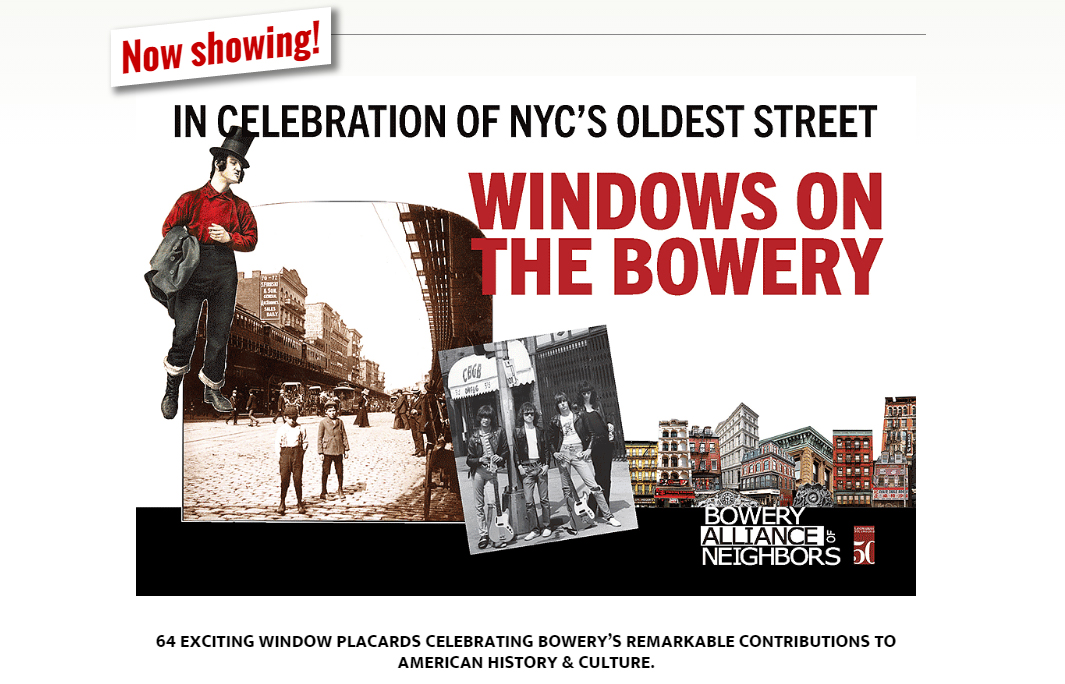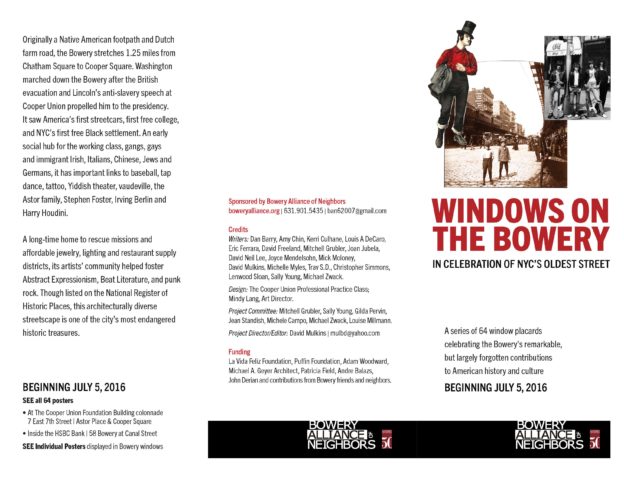 Originally a Native American footpath and Dutch farm road, the Bowery stretches 1.25 miles from Chatham Square to Cooper Square. Washington marched down the Bowery after the British evacuation and Lincoln’s anti-slavery speech at Cooper Union propelled him to the presidency. It saw America’s first streetcars, first free college, and NYC’s first free Black settlement. An early social hub for the working class, gangs, gays and immigrant Irish, Italians, Chinese, Jews and Germans, it has important links to baseball, tap dance, tattoo, Yiddish theater, vaudeville, the Astor family, Stephen Foster, Irving Berlin and Harry Houdini.
Originally a Native American footpath and Dutch farm road, the Bowery stretches 1.25 miles from Chatham Square to Cooper Square. Washington marched down the Bowery after the British evacuation and Lincoln’s anti-slavery speech at Cooper Union propelled him to the presidency. It saw America’s first streetcars, first free college, and NYC’s first free Black settlement. An early social hub for the working class, gangs, gays and immigrant Irish, Italians, Chinese, Jews and Germans, it has important links to baseball, tap dance, tattoo, Yiddish theater, vaudeville, the Astor family, Stephen Foster, Irving Berlin and Harry Houdini.
A long-time home to rescue missions and affordable jewelry, lighting and restaurant supply districts, its artists’ community helped foster Abstract Expressionism, Beat Literature, and punk rock. Though listed on the National Register of Historic Places, this architecturally diverse streetscape is one of the city’s most endangered historic treasures.

